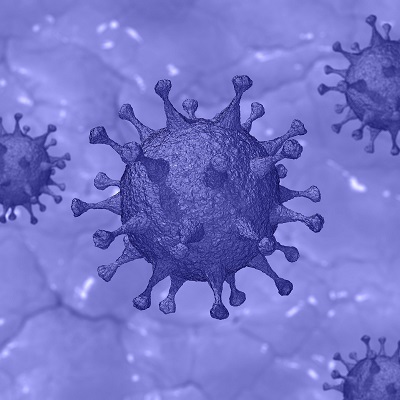
The latest analysis of the COVID-19 epidemic in the UK combines large-scale data and genomic sequencing to provide a detailed picture of the number and sources of SARS-CoV-2 introductions into the UK. The study by researchers at the University of Oxford, University of Edinburgh, and the COVID-19 Genomics UK Consortium (COG-UK), shows how and when the SARS-CoV-2 virus entered the UK, mostly from European countries during March. The rate of virus importation peaked around 15 March.
Nick Loman, Professor of Microbial Genomics and Bioinformatics in the Institute of Microbiology and Infection, is leading the team at the University of Birmingham who are part of the COVID-19 Genomics UK Consortium.
The study found that the UK epidemic was composed of a very large number transmission lineages. Each lineage was founded by a separate introduction event from inbound international travel, then grew through local transmission within the UK. The study detected 1356 independent transmission lineages, based on analysis of genome and travel data up to 22 May 2020. However, this is likely to be an underestimate of the actual number of virus introduction events that have resulted in onwards transmission, because we have generated virus genome sequences for only a small fraction of UK infections.
An estimate of the daily intensity of SARS-CoV-2 importation into the UK indicated that importation intensity to the UK rose rapidly in early March, peaked around 15th March, then quickly declined to a low level in April. This pattern is driven by the interplay between two trends throughout March: a substantial fall in the number of inbound travellers and a rapid growth in the number of infections in many European countries.
The study found that early importations from Italy were, by early March, surpassed in number by importations from inbound travellers from Spain and France. The diversity of source locations also increased in March, with importations attributed to a growing range of countries. The contribution of China and other Asian countries to the number of importations was very small.
Many UK transmission chains are no longer detected by genome sequencing and have likely been extinguished. In early March the epidemic mostly comprised chains that had been newly detected for the first time, whilst by late April most transmission chains had not been detected by genomic sampling for more than a week. This trend reflects the declining number of SARS-CoV-2 cases in the UK during April.
The report constitutes preliminary descriptive findings and has not been peer-reviewed. Work on these data is ongoing and findings may therefore change in the future. The analysis does not attempt to model or evaluate the effectiveness of public health interventions or travel restrictions.
Dr Ewan Harrison, COG-UK and fellow at the Wellcome Sanger Institute, said: “Due to our ability to track the genomes of the SARS-CoV-2 virus through the sequencing by the COG-UK consortium, we can now link that with other forms of data to truly understand how the pandemic moves through a country or region. This is a powerful tool that in future could be used to accurately inform public health policy on appropriate steps to take to limit the flow of such a virus and protect people.”
The COVID-19 Genomics UK Consortium (COG-UK) – comprised of the NHS, Public Health Agencies and numerous academic and research institutions – is delivering large scale, rapid sequencing of the SARS-CoV-2 virus from positive COVID-19 samples and sharing intelligence with hospitals, regional NHS centres and the Government.
Professor Sharon Peacock, Director of the COVID-19 Genomics UK Consortium (COG-UK), said: “The COG-UK consortium has now sequenced more than 24,000 genomes. This is providing the foundation for a better understanding of this outbreak. It also helps us shape our future response, including the development of systems to predict the introduction of SARS-CoV-2 into the UK. This could inform policy decisions on travel, and may provide valuable information to other countries through international collaboration.”